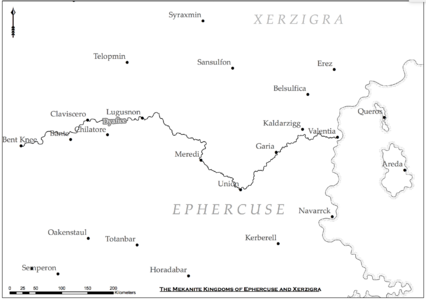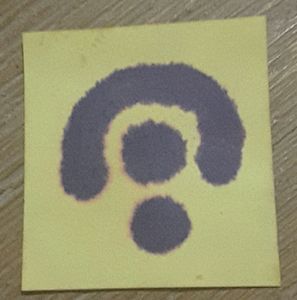The Rift Wars
Three mellenia have past since the world was cleft in two. Forsaken were the beings when the gods fell. The great rift defines all those that live beside, within or over its cliffs. Those that were to survive grew stronger and apart. First, were the elves who held a steel blade to the throats of any who dare question their reign. But their oppressive technocracy was to implode through their own bloody spite and treachery. Their time, was the age of the Ancient Republic.
But as the last noble elvish blood seeped below the surface into the eddies and lakes of the Dyafice, whom should rise but the scattered and nameless tribes of the uplands. A human conqueror, Mekzig, as Mek, the God of Men. But before long, the humans too learnt nothing from the fall of the Ancient Republic. They turned their wayd into a brutal set of instiutions and came to dominate all who dwelled along the rift's gearth. In their hearts, they looked up to their one true god but downward to all other religious beliefs with lethal intolerance. Forgotten would be the pluralist temples of the Ancient Republic. Their time, the present age, is a time of war. The Rift Wars.
Little is written of how the Rift came to be but many prophecies abound of its origin. For the Mekanites, the rift is evidence of the wretchedness of the Ancient Republic and the poverty of a society once ruled by other kind. The rift avows the greatness of Mek. But the songs of the street tell another tale. In the alleys and smoke houses of cities and towns believers secretly pray to the old gods. In the farm houses and ale houses of villages the downtrodden look up to the heavens. Quietly though, beyond the reach of the Mekanites, the fallen gods answer their prayers.
However, a wondrous new power lingers in the third mellenium. It is the battery of sorcerous energy the Mekanites call Toch'thonism. Coming in many forms, from the wild energy of the sorcerer to the cloistered mastery of the wizard, Toch'thonism is seen as threatening Mekanite power in the two kingdoms.
Contents
History
In the common tongue, the name of the known world is abbreviated to simply Ruk. Scholars categorise its history into two distinct stages called the Durations. The historical record spans three mellenia with the First Duration referring the time of the Ancient Republic and the Second Duration, the present age, as the The Age of Mek. The term Duration came into the vernacular through the research of a Valentian scholar, Holbard Cobala, who argued that there were two epochs, or durations, to Ruk history. He concluded that the Second Duration was looming as a fatal repeat of the first. Cobala's distopian conclusion is rejected by the followers of Mek.
Races
The known world is peopled by a variety of humaniod races. The nomadic Dwarves are common across the the two kingdoms of Ruk with humans suspicious of their ways often accusing them of crime sprees and vagrancy. Elves today either avoid all contact with the human rulers of the Rift or are subordinate to human occupation as mecenaries and journeymen. The dense forests of the lower Dyafice support small populations of Dyaks who trade with human populations but prefer to exist outside their vast walled cities.
Humans
Two human kingdoms claim sovereignty over the rift. To the north lies the kingdoom of Xerzigra and to the south the kingdom of Ephercuse. Both kingdoms worship Mek but disagree as to the form that worship should take. In recent times, a peace was agree between the two kingdoms which officially ended the Third Sulfic War.
Gods and Demi-gods
What is left of elven religious beliefs falls into two camps. The first deity is venerated by the wood elves of the lower Dyafice who worship Pauwm and continue to believe that the true nature of Pauwm is yet to be understood. Unlike their forest dwelling cousins, the black elves subordinate Pauwm to their sun god, Baltet.
Mek
The human god Mek is the immortalisation of Mekzig the Conqueror, a rural warrior come king who united the tribes of the south and captured the three union cities from the remaining elven nobles. The tragedy of Mekzig's deification combined with the brutal efficacy and dogma of the orders that his daughter was to found continue to dominate the known world.
Mekanite Theocracy
At its core, the Mekanite theocracy centres on the closest of ties between the political leader of a province, the Chair, and his trusted spirtual advisor, the Robe. The Chair and Robe system can be traced back to the days when Mekzig walked the cliffs of Ruk and to break this tie is treason and any weakening of it is seen as a sign of revolt and succession. The provincial Chairs and Robes report directly to their ruling counterparts, the The Crown Exceptor and First Mekae respectively.
Orders and Institutions
The Tri-Furs is the name given to the three orders of the Mekanite Church. Each order has its own speciality, vows and role in the Chair and Robe system of government. At the top of this hierarchy are the Mekanite clerics who adjucate over all crimes in the kingdom. Mekanite clerics are distinctive for their green and black robes. Reporting to clerics are two subordinate orders who have special duties to perform for the Church.
Magic (Toch'thonism)
- Cursors - Nuer
Cities and Towns
- Claviscero - The Second Union
- Bent Knee
- Velentia - Falling Fortress
- Lugusnon - Midlight
- Bante
Notable Characters
- The Crown Exceptor
- First Mekae - Armand Pressarian
- Muir Durilix
- Teroaro Mahakanika
- Kinnoch
- Rochelle of Mirais - First Robe of Clavisaro
- Goodrun - Conspirator
- Roima Seermaul - Apparent Head of the Nuir rebellion (setup)
- Vinold Melspur - Actual head of the Nuir rebellion
- Ungura - Firegiant who heads hobgoblin army
Adventures
Map
The Five Dies
Dwarves: Tale of the 5 glyphs/dies - metal, earth, fire, water, wood.
"All of the sons disappeared due to the betrayal of two of the sons. The son of earth and the son of metal."
Elves:
5 Sons - If the elememts are ever separated then it would cause the fall of the republic.
DM
- Ben



